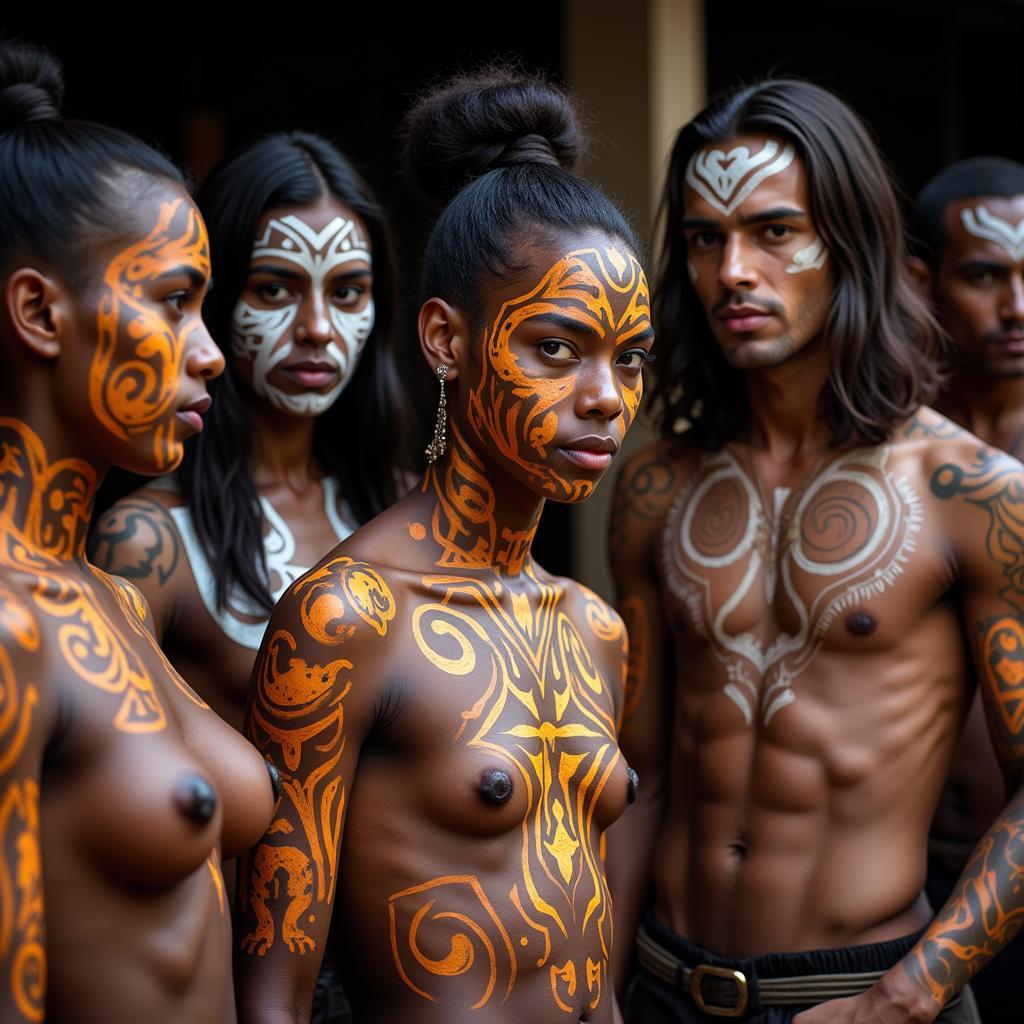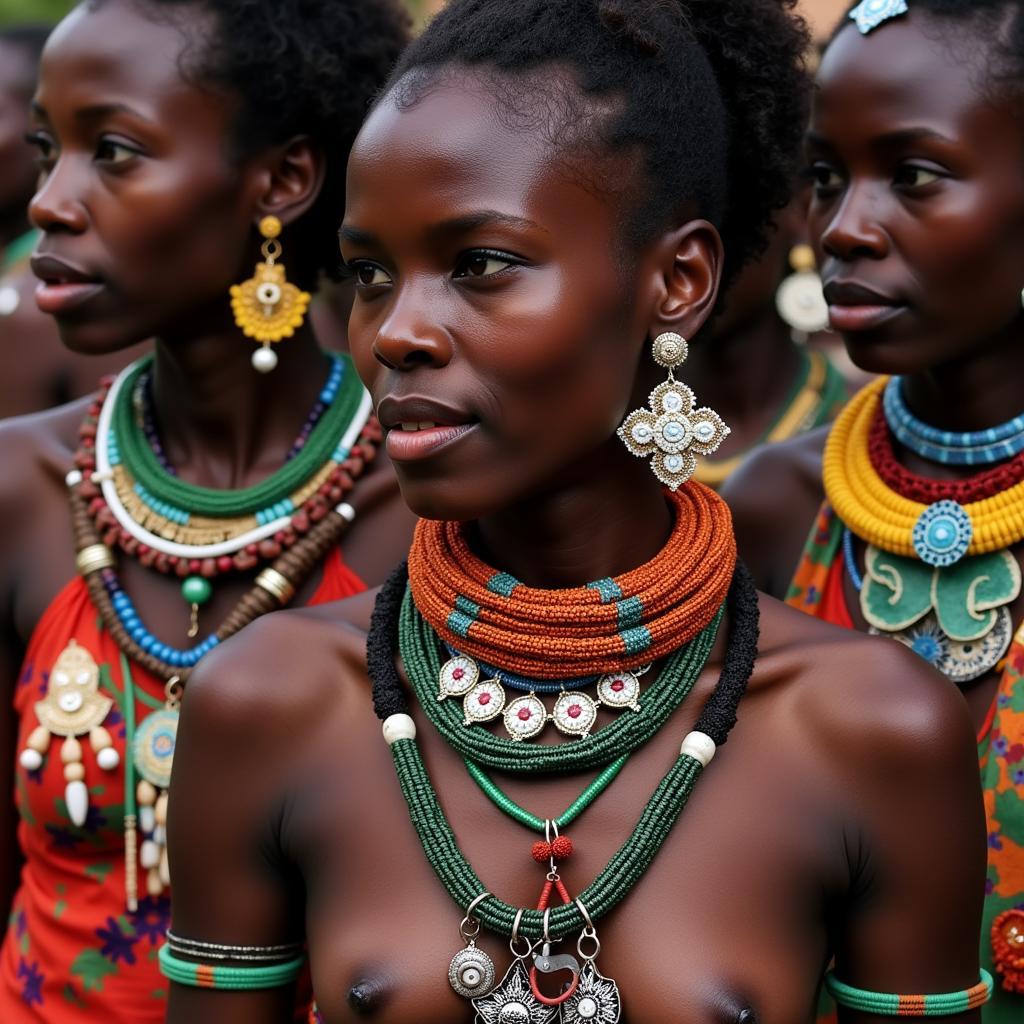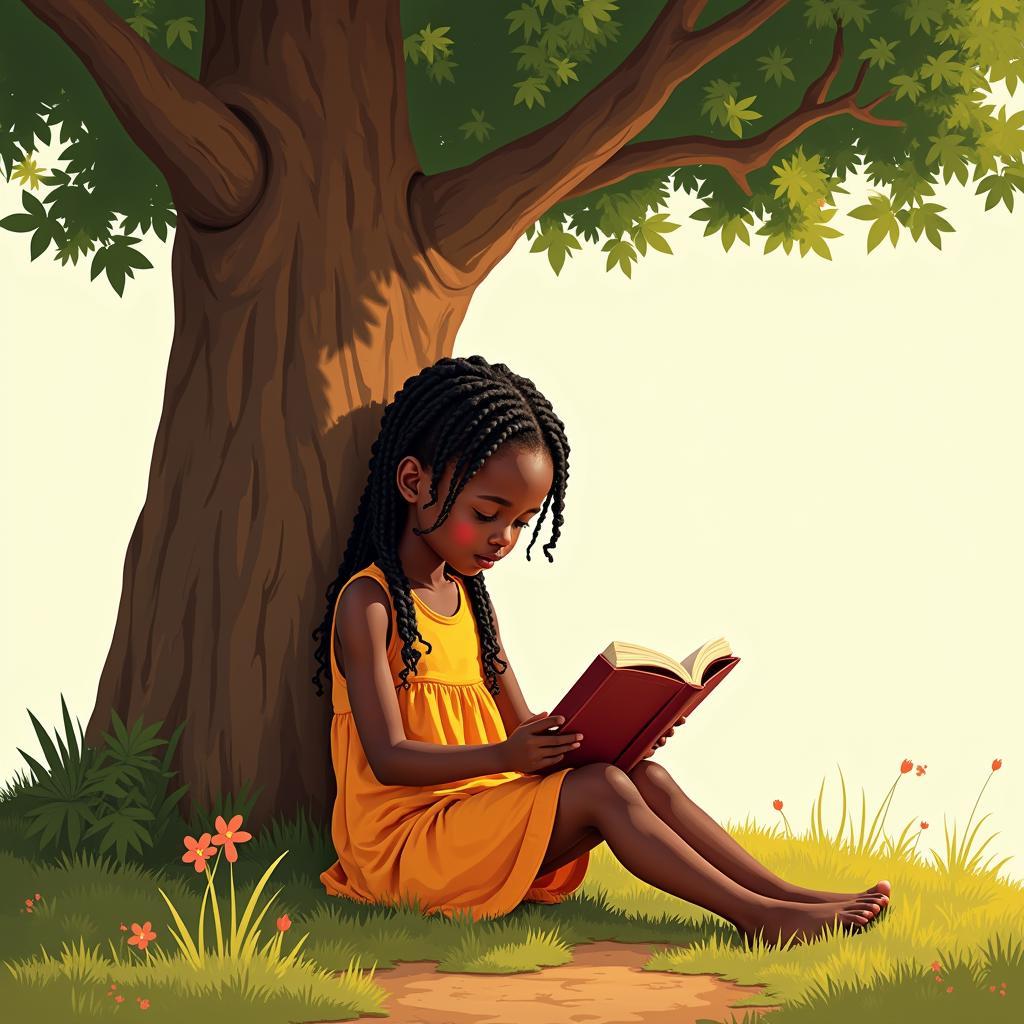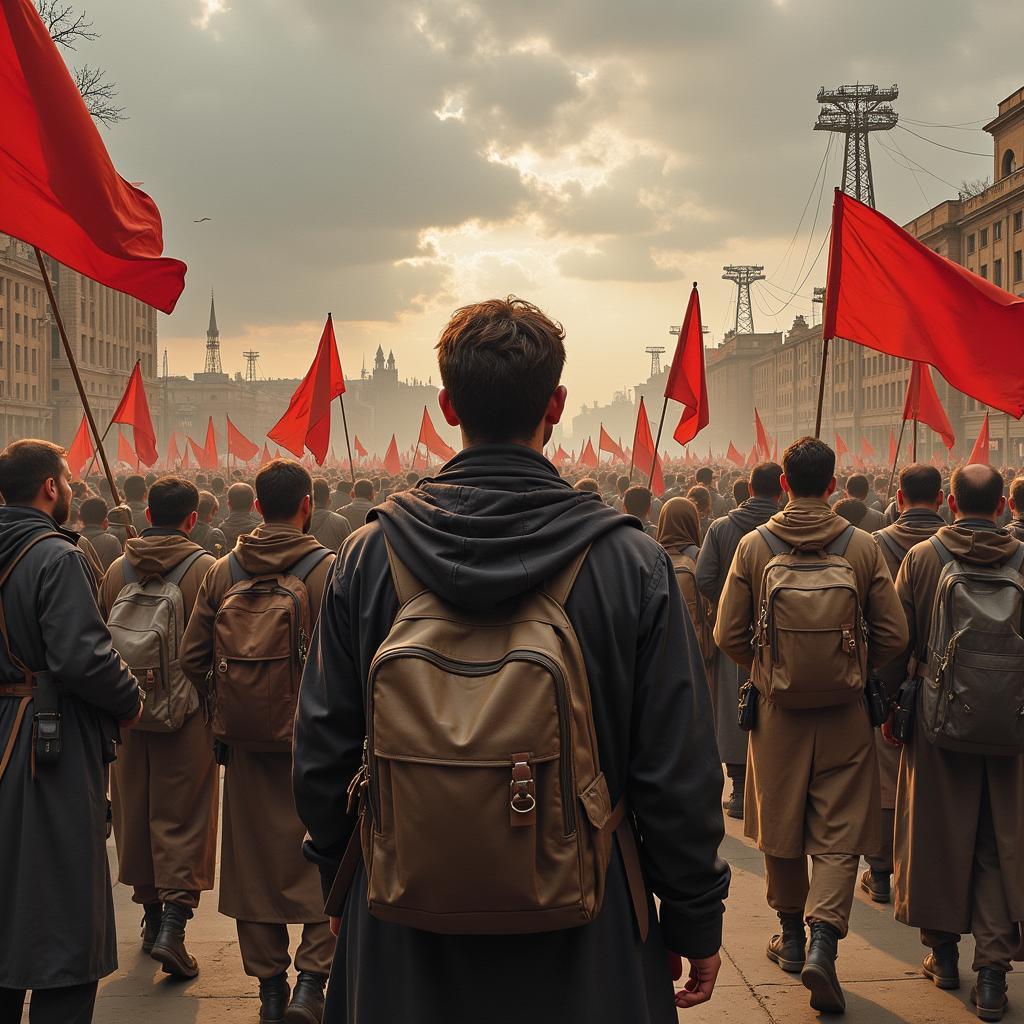Exploring the Rich Tapestry of African Body Art
African Body Art is a powerful form of expression, deeply embedded in the cultural fabric of diverse communities across the continent. From intricate scarification to vibrant paintings and elaborate adornments, these practices tell stories of identity, status, and heritage, offering a fascinating glimpse into the rich tapestry of African traditions. More than mere decoration, African body art serves as a visual language, communicating complex narratives and connecting individuals to their ancestors and their communities.
The Significance of African Body Art: More Than Meets the Eye
African body art traditions vary widely across the continent, reflecting the unique customs and beliefs of different ethnic groups. While some forms serve aesthetic purposes, many hold deep spiritual and social significance. For example, scarification, a practice involving the intentional creation of scars on the body, can signify rites of passage, clan affiliation, or even personal narratives. Similarly, certain hairstyles and headdresses communicate social status, age, and marital status. Understanding the nuances of these practices offers valuable insights into the diverse cultures of Africa. African body art is not a monolithic entity; it encompasses a multitude of forms and meanings.
Some communities use natural pigments derived from plants and minerals to create stunning body paintings. These ephemeral artworks can be used for ceremonial occasions, celebrations, or simply as everyday adornments. They often feature intricate geometric patterns or symbolic representations of animals and spirits. These temporary forms of body art highlight the adaptability and dynamism of African artistic expression.
 African Body Painting: Ceremonial Designs
African Body Painting: Ceremonial Designs
Scarification: A Permanent Mark of Identity
Scarification, while sometimes viewed with apprehension in Western cultures, holds profound meaning in many African communities. It’s a testament to resilience, a mark of belonging, and a visible connection to one’s ancestors. The process, often performed during adolescence, can be a rite of passage, marking the transition into adulthood. The resulting scars become a permanent record of an individual’s journey and identity within their community. The designs, meticulously crafted, often carry symbolic meaning related to lineage, social status, or spiritual beliefs.
African Body Adornment: A Celebration of Beauty and Status
Beyond painting and scarification, African body art encompasses a wide array of adornments, including jewelry, beads, and textiles. These items, often crafted with meticulous detail, serve not only as expressions of beauty but also as indicators of social status, wealth, and cultural affiliation. For example, elaborate beaded necklaces can signify a person’s rank within a community, while specific types of textiles may be reserved for ceremonial occasions. African elephant body parts, such as ivory, have historically been used in some cultures for adornment, although this practice is now largely condemned due to its devastating impact on elephant populations. It’s important to understand the historical context and ethical implications surrounding the use of such materials.
 African Body Adornment: Beads and Jewelry
African Body Adornment: Beads and Jewelry
The Evolution of African Body Art in a Modern World
How has globalization and modernization impacted these ancient traditions? While some aspects of African body art remain deeply rooted in traditional practices, others have evolved and adapted to contemporary influences. The rise of social media and global interconnectedness has exposed these art forms to a wider audience, sparking new interpretations and innovations. Some artists are blending traditional techniques with modern aesthetics, creating unique expressions that reflect the dynamic interplay between heritage and modernity. However, it’s crucial to approach this evolution with respect and sensitivity, acknowledging the cultural significance of these practices.
Frequently Asked Questions (FAQ)
- What are the most common forms of African body art? Scarification, painting, tattooing, and adornment with jewelry, beads, and textiles.
- What is the significance of scarification in African culture? It often marks rites of passage, clan affiliation, or personal narratives.
- Are all forms of African body art permanent? No, body painting is a temporary form of expression.
- How has African body art evolved in modern times? It has adapted to contemporary influences, blending traditional techniques with modern aesthetics.
- Where can I learn more about specific African body art traditions? Researching specific ethnic groups and their customs is a great place to start.
- What are some ethical considerations surrounding African body art? Respecting the cultural significance of these practices and avoiding cultural appropriation is crucial.
- Are there any health risks associated with traditional African body art practices? It’s important to research and understand the potential risks associated with specific practices.
In conclusion, African body art is a captivating and complex subject, offering a unique window into the diverse cultures and traditions of the continent. From the intricate scars that tell stories of resilience to the vibrant paintings that celebrate beauty and spirituality, these practices are a testament to the enduring power of human expression. Exploring the rich tapestry of African body art allows us to appreciate the depth and diversity of human experience. Remember to approach this topic with respect and a genuine desire to understand the cultural significance behind these practices.
 African Body Art: Contemporary Interpretations
African Body Art: Contemporary Interpretations
Need more information about African Life and culture? Explore our other articles on related topics. What other questions do you have about African body art?
Contact us for further assistance:
Phone: +255768904061
Email: kaka.mag@gmail.com
Address: Mbarali DC Mawindi, Kangaga, Tanzania. We have a 24/7 customer service team ready to help.

